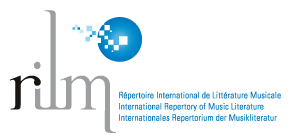El problema de la velocidad de los discos de 78 rpm. Su incidencia en la historia estética del tango.
Resumen
Los discos de 78 rpm durante la vigencia del sistema de grabación “acústico” y aun en los primeros años del nuevo sistema “eléctrico”, no fueron grabados a 78 rpm de velocidad, sino entre las 66 y 82 rpm. Los aparatos reproductores desde hace 70 años, en cambio, giran a 78 rpm. Esa diferencia de velocidad produce, al reproducir los discos, variaciones de altura y tempo con respecto a la versión que se toco “en vivo” al grabar, que pueden ser de hasta tres semitonos, y que implican la deformación tímbrica de voces e instrumentos. Esta problemática se conoce desde hace mucho tiempo pero no es considerada por quienes se abocan al estudio de la música popular en Argentina, salvo excepciones. La situación conduce a que un alto porcentaje de las grabaciones que se evalúan realizadas entre 1905 y c.1930, no sean escuchadas como corresponde, deformándose la percepción del analista actual. A pesar de ser una cuestión eminentemente técnica (mecánica) no debe ser pasada por alto, pues afecta la cuestión estética sobremanera. El articulo explica este problema, propone una solución y sugiere la necesaria reescritura de muchos aspectos de la historia del tango de las dos primeras décadas del siglo XX, basada en una evaluación critica de los fonogramas existentes.
Descargas
Descargas
Publicado
Número
Sección
Licencia
Derechos de autor 2018 Enrique Binda, Omar García Brunelli

Esta obra está bajo una licencia internacional Creative Commons Atribución-NoComercial 4.0.
Atribución/Reconocimiento-NoComercial 4.0 Internacional
https://creativecommons.org/licenses/by-nc/4.0/
Usted es libre de:
- Compartir — copiar y redistribuir el material en cualquier medio o formato.
- Adaptar — remezclar, transformar y construir a partir del material.
- La licenciante no puede revocar estas libertades en tanto usted siga los términos de la licencia
Bajo los siguientes términos:
- Atribución — Usted debe dar crédito de manera adecuada, brindar un enlace a la licencia, e indicar si se han realizado cambios. Puede hacerlo en cualquier forma razonable, pero no de forma tal que sugiera que usted o su uso tienen el apoyo de la licenciante.
- No Comercial — Usted no puede hacer uso del material con propósitos comerciales.
- No hay restricciones adicionales — No puede aplicar términos legales ni medidas tecnológicas que restrinjan legalmente a otras a hacer cualquier uso permitido por la licencia.
Avisos:
No tiene que cumplir con la licencia para elementos del material en el dominio público o cuando su uso esté permitido por una excepción o limitación aplicable.
No se dan garantías. La licencia podría no darle todos los permisos que necesita para el uso que tenga previsto. Por ejemplo, otros derechos como publicidad, privacidad, o derechos morales pueden limitar la forma en que utilice el material.






